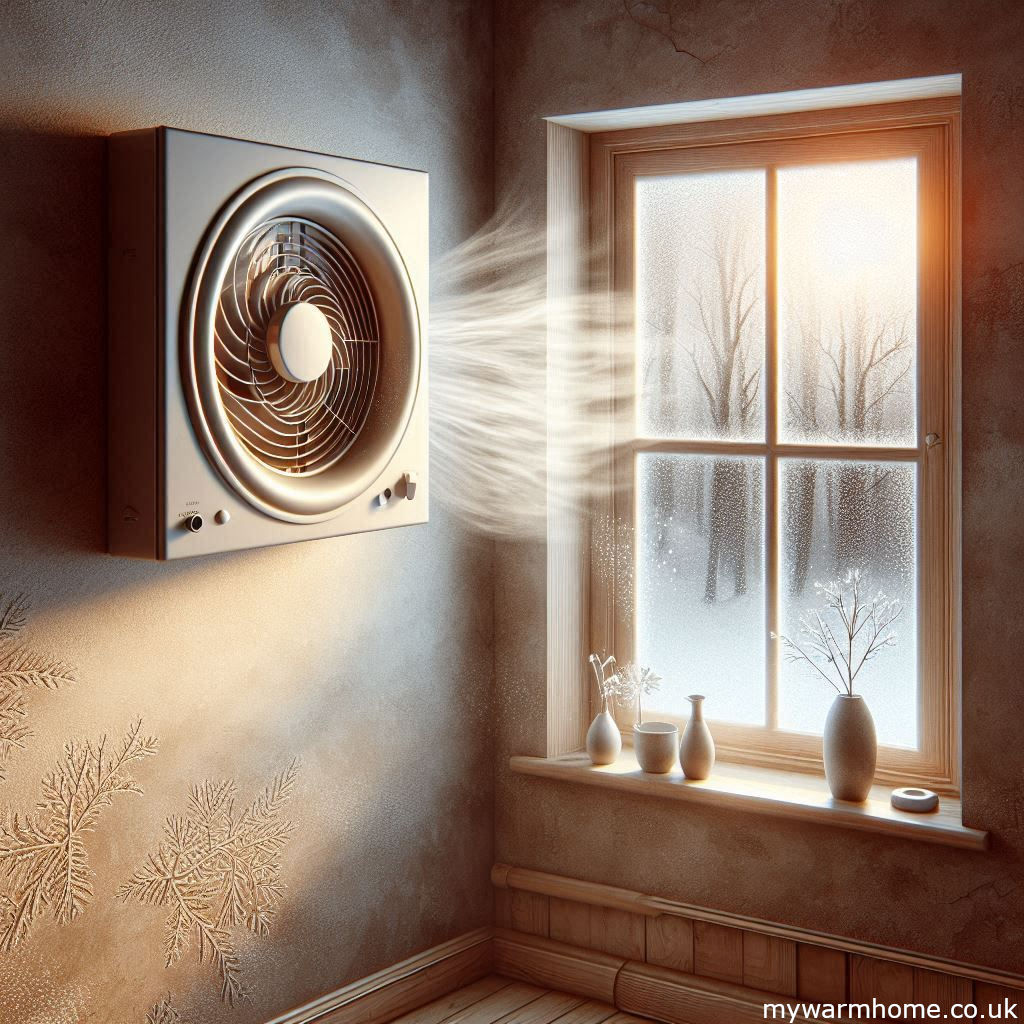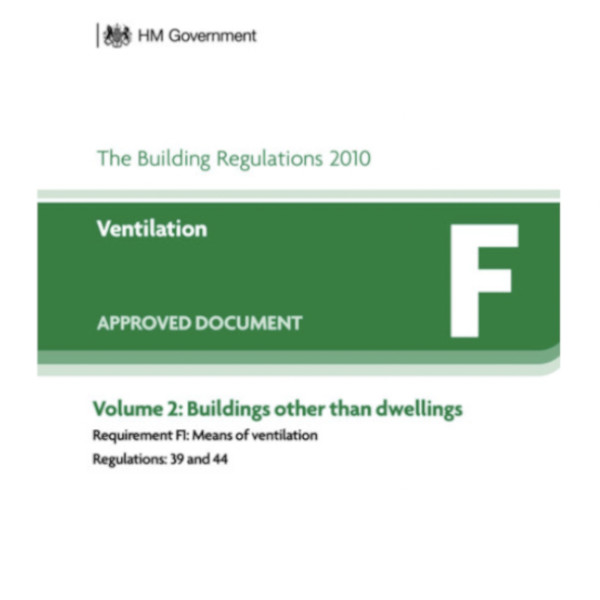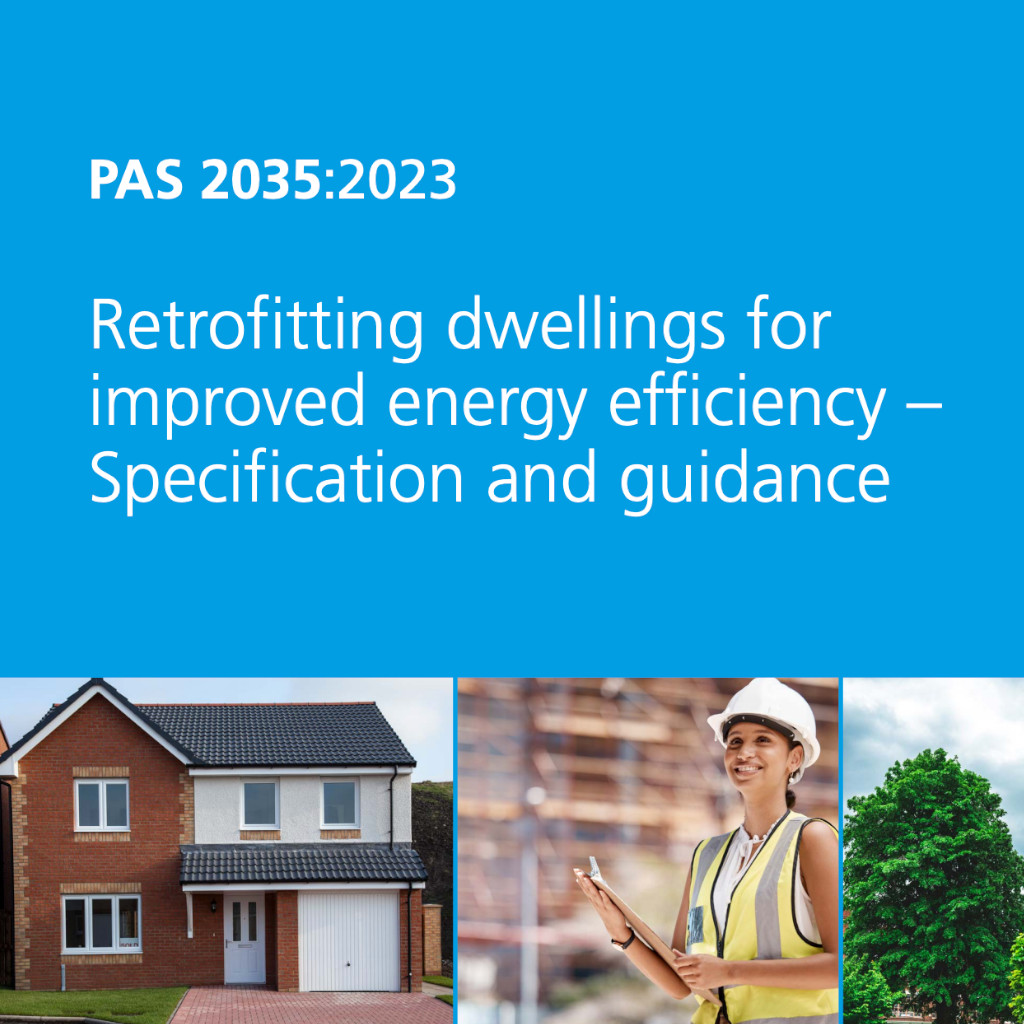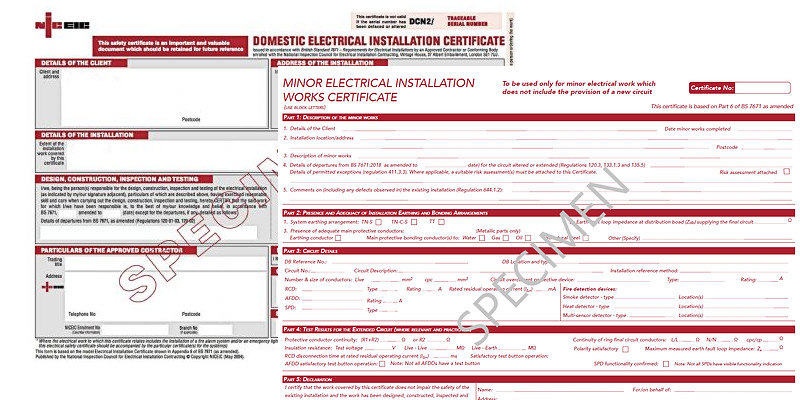What is Dmev?
This ventilation type will always be on and constantly replenishing the air if a strategy is in place. Usually operating in the background at a low extraction rate, it uses sensors to begin working more actively as moisture builds up.
Running costs will vary between units, but are typically very low (can be as little as £6 per year at current unit costs.). Some units run at such a low rate that they can sometimes appear inactive.
Manufacturer’s instructions may show how to remove the front plate to change settings, etc.

In the UK, the design, installation, and performance of dMEV systems are governed by Building Regulation Part F, which sets out requirements for ventilation rates, extraction performance, and ducting standards. Compliance ensures that the system meets legal standards, maximizes energy efficiency, and provides healthy indoor air quality.
Video from Titon.

The Pros.
Cost-Effective Installation. dMEV systems are generally cheaper and easier to install compared to centralised systems, particularly in existing buildings.
Flexibility. These systems provide targeted ventilation to specific areas, allowing for more flexible and tailored ventilation solutions.
Reduced Installation Complexity. dMEV systems do not require extensive ductwork, making installation less invasive and more straightforward. They also offer simple maintenance techniques.
Energy Efficiency. Modern dMEV units can be energy-efficient, with some models featuring low power consumption and heat recovery options.
Reduced Noise. Because the units are smaller and serve specific areas, they can be quieter, especially if placed in less occupied spaces.
Redundancy. Multiple independent units mean that a failure in one unit does not compromise the entire building’s ventilation.
Building regulations and PAS. Installing Dmev’s can reduce the background ventilation requirements to meet regulations.
The Cons.
Multiple Units Required. To ventilate an entire building effectively, multiple units are needed, which can increase overall maintenance requirements.
Aesthetic Impact. Visible units in each ventilated space can be less aesthetically pleasing and may take up space.
Variable Performance. The effectiveness of ventilation can vary between units, potentially leading to inconsistent indoor air quality (IAQ) across different areas.
Limited Control. While dMEV systems can be equipped with sensors and controls, managing multiple units can be more complex than a centralised system with a single control point.
Installation guide.
Ventilation regulations in the UK are designed to ensure adequate air quality, prevent dampness, and maintain healthy indoor environments. The key regulations and guidance documents include the following:
Building Regulations. (Approved Document F)
This is the primary legal framework governing ventilation in buildings. It applies to new builds and significant refurbishments in England and Wales, including insulation.
The government website has a basic outline and the main points include:
Adequate Ventilation. Provision of natural ventilation (windows, trickle vents etc.) or mechanical systems (e.g., extractor fans).
Ventilation Rates. Specific airflow rates for different spaces, such as bathrooms, kitchens, and living areas.
For example:
Kitchens: 30 litres/second for a cooker hood to outside air, or 60 litres/second for other mechanical ventilation. Bathrooms: 15 litres/second for mechanical extractors. Link here.
The Clean Air Act 1993
Focuses on controlling air pollution. It applies to the design of ventilation systems to ensure they do not release pollutants into the atmosphere. Link here.
BS EN 16798-1:2019
This British Standard provides technical guidance on achieving adequate indoor air quality through design and operation. Link to BSI here.
Additional Guidelines.
CIBSE Guidelines: The Chartered Institution of Building Services Engineers provides detailed guidance on best practices for designing ventilation systems, including natural and mechanical options.
Part L of the Building Regulations: Focuses on energy efficiency. Ventilation systems must balance energy use with adequate air circulation to comply with energy-saving standards.
Damp and Mould Regulations: The last BS standard has been withdrawn, and the UK government has produced guidance.
For regulation links for social housing and landlords, go here.
From June 2022 the building regulations (Part F) introduced a more robust commissioning regime with ventilation. All new mechanical ventilation systems should be commissioned, and a copy of the commissioning report should be left on the premises. A link to the BEAMA checklist is here. Building control should be notified unless the installers are members of a self certifying competent person scheme (i.e. NAPIT, NICEIC).
Ventilation rate. The minimum ventilation rate required by UK building regulations is within part F and currently set at 0.3 litres per second per square meter of floor area.
Duct insulation. Ducting carrying air between the unit and the atmosphere must be insulated to reduce the chance of condensation.
Outlet terminal. The outlet terminal should have a free area that’s at least the same as the duct’s cross-sectional area. It should also be designed to prevent rain, insects, and birds from entering the duct.
Flexible ducting. Flexible ducting should be pulled taut and kept to a minimum length.
Supply and extract terminals. *Air valves should be positioned on the opposite side of the room from internal door openings. They should also be at least 200 mm from walls if they’re on the ceiling, and no more than 400 mm from the ceiling if they’re on the wall.
Background ventilation. Trickle vents should not be installed in the same rooms as the room extraction point (valves in the industry), as overall ventilation effectiveness can be reduced. Door undercuts should be around 10mm from the finished floor. (fire doors have different regulations)
*Air valves are an important part to any mechanical ventilation system. They are used in rooms where the ducting meets ceilings or walls so that air can be properly extracted or supplied.
Tips on controlling moisture and condensation.
Open Windows. Regularly open windows to let fresh air circulate and reduce humidity.
Use Extractor Fans. Turn on extractor fans in bathrooms and kitchens to remove moisture from showers and cooking.
Install Trickle vents. Easy and cheap solution to introduce background ventilation if required.
Check door to floor clearances. This should be around 10 mm from finished floor covering to allow fresh air to circulate from room to room. (fire doors have different regulations)
Avoid drying clothes indoors. Try to dry your clothes outside or in a well-ventilated area.
Use Dehumidifiers. Consider using a dehumidifier in damp areas to reduce moisture levels. If you cannot avoid drying clothes inside, then a dehumidifier can help with the moisture control.
Keep your home at an even temperature. At 18-21 °C, the dew point will very rarely be reached. As we know, affordability can have a huge impact on achieving this.
Use pan lids. Always try to use lids on cooking pans, not only will this reduce moisture, but it makes cooking more energy efficient. If extraction is available when cooking, then try to use it.
Fix leaks. Repair any leaks in your roof, walls, or pipes to prevent dampness.
Insulate Well. Proper insulation helps prevent condensation by keeping your home at a consistent temperature.
Vent Appliances. Ensure dryers and other appliances are vented outside to avoid trapping moisture indoors.
Avoid using portable gas appliances(LPG). Moisture from burning LPG can lead to condensation, which can cause mould and mildew.
Gas and open flued appliances.
If the fabric of the property is being improved and open-flued gas appliances exist, then a gas spillage test should be carried out on each appliance by a suitably competent operative.
Rules exist that give an average unimproved property a certain amount of leakiness (adventitious air) to allow open-flued appliances to operate safely.
This all depends on how much fuel burns over a period of time, for example: 7.5kw/hr, 9kw/hr, 6.9kw/hr. You will see this on the data badge of the appliance (gas rating of an appliance here.). The more fuel used, the more leakiness is needed. Multifuel appliances are treated in roughly the same way but do not come under gas safe legislations. HETAS and building regulations govern multifuel installations and ventilation.
This is the reason combustion ventilation is sometimes needed. This allows the air to be replenished (with an open flued appliance we are burning the oxygen in the room that we use to breathe)
With the introduction of insulation, extraction ventilation should be installed as part of the process, we now have a different factor to add in with gas safety. Extraction fans either pulling or pushing air (PIV) can now effect the performance of the appliance.
Open flued gas appliances should be checked to prove they are not spilling products of combustion into the property. This is verified by performing a spillage test.
Part J states. “Extract fans lower the pressure in a building, which can cause the spillage of combustion products from open-flued appliances. This can occur even if the appliance and the fan are in different rooms”.
Any funded insulation work now includes ventilation upgrades as part of the current PAS, so extract ventilation will be installed. This should have been factored in as part of any ventilation work carried out. A competent person is required to perform spillage tests.
Part B, 8(1) of the Gas Safety (Installation and Use) Regulations 1998 states that no person can make any changes to a premises that contains a gas fitting or storage vessel if the changes would compromise the safety of the fitting or vessel.
This basically means if the fabric of the building (walls, floors, roofs) are being insulated then appliances need to be checked by a suitably competent and qualified person.
Regulations.
Part F of the UK Building Regulations, sets out requirements for ventilation in buildings to ensure adequate indoor air quality and prevent issues such as condensation, mould growth, and the build-up of pollutants.
PAS 2035 is a comprehensive standard and not a regulation. It was introduced in 2019 as part of the UK government’s commitment to improving energy efficiency in buildings. If work being carried out on a UK funded scheme then the current PAS should be followed aswel as building regulations.
Electrical certificates.
The two types of electrical certificates you will come across as a customer who is having any electrical work as part of installing EEM’s (energy efficient measures)
- Electrical Installation.
- Minor Works Certificate.
Electrical Installation Certificate.
An electrical installation certificate is the type of certificate a customer receives after an electrician has installed one or more new circuits. Other examples include a complete rewire, a replacement consumer unit or an additional consumer unit. Generally, any time electrical work is done at the consumer unit, a new installation certificate will be issued.
Minor Works Certificate.
A minor works certificate is issued after an electrician has made an alteration to an existing circuit. Minor works certificates are often used to certify work such as adding additional sockets to an existing circuit or increasing the number of light fittings in a room. It can also be where a fused spur has been installed for an appliance or boiler connection.







